What’s in my toolbox? — Randy Regier
What’s in my … ? issue #127
Randy Regier was born, Omaha, Nebraska 1964 and moved around a bit through the Midwest and then to Barcelona, Spain and back to Kansas and then to the Pacific Northwest in 1971. Youth and early adult years lived in Oregon and developed careers as a cartoonist and professional auto-body painter. A subsequent awakening lead to the attainment of a BFA in Sculpture at Kansas State University and subsequently, after walking the Camino de Santiago with his family, a move to New England to acquire a MFA in Studio Arts at Maine College of Art. Randy’s life has been spent in the company of family, cartoons, toys, cars and tools but his mind has always wandered towards narrative, the power of childhood and questions about purposeful living via aesthetics and esthetics. In the realm of the Arts, he can continually become, as that is revealed through work. Home and studio are now centered in Kansas City Kansas. You can find Randy on Instagram @randy.regier and at randyregier.com.
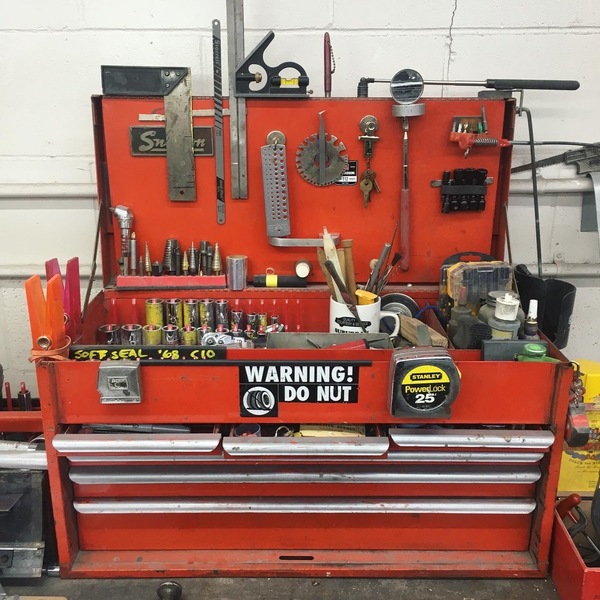
My Day Job requires of me that I restore and customize vintage cars. To that end I maintain four moderate sized toolboxes because of the diversity of my tasks and the fact that I work between two buildings and cross a street regularly to do so. For the purposes of this essay, this is my “home”, or primary toolbox.
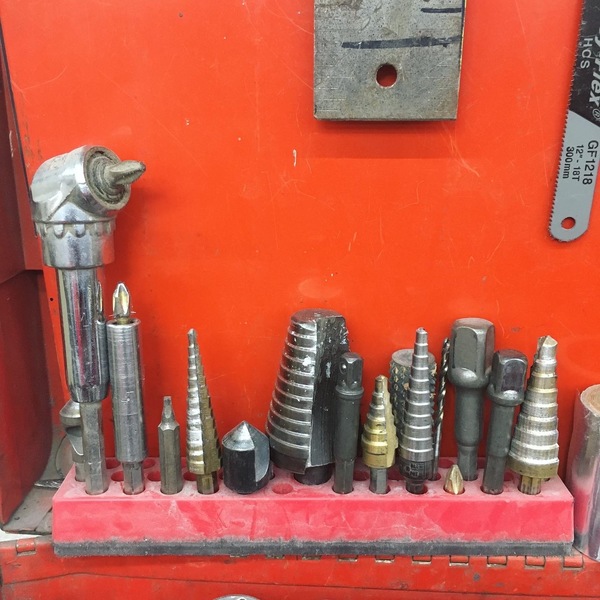
Not a day passes that I don’t draw from this array. I use unibits/step drills, ¼” and 3/8” socket to drill driver bits, Phillips drivers, angle-drive attachments and counter-sink chamfer bits daily. If you have one tool that can accomplish more than one task, yes, to that.
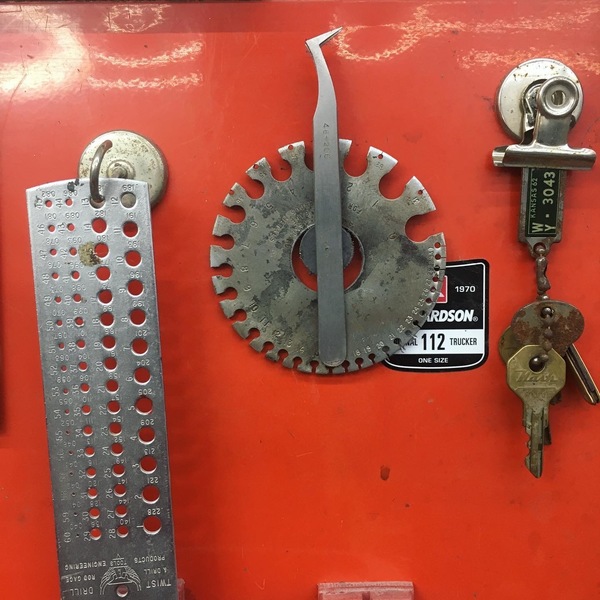
Drill index (left), sheet material gauge thickness indicator (round device, center) and tweezers are always useful. To the right are the keys to a 1953 Nash Statesman Custom Sedan, the vehicle/found object I hope to turn into an interactive art service vehicle/performance piece. The indexes and gauges I use to perform my work and draw my wage. The Nash keys remind me of what I want to make that is meaningful beyond the daily job thing.
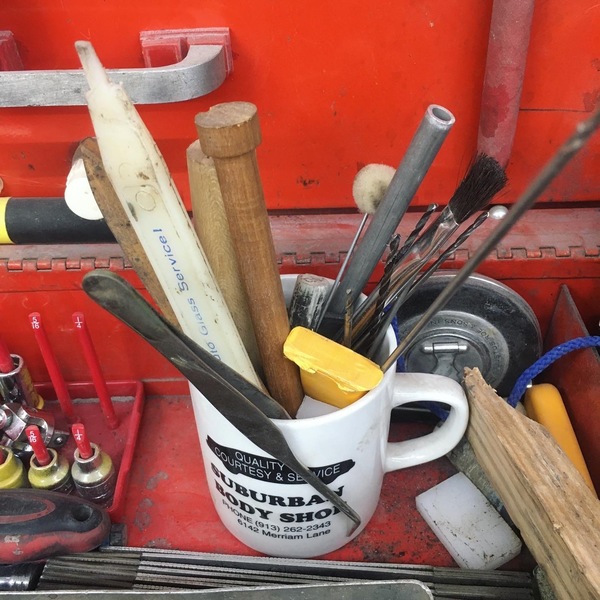
Wood and hard plastic/Teflon dowels serve well to coax and manipulate sheet metal (via hammer) without causing undue stress to the parent metal.
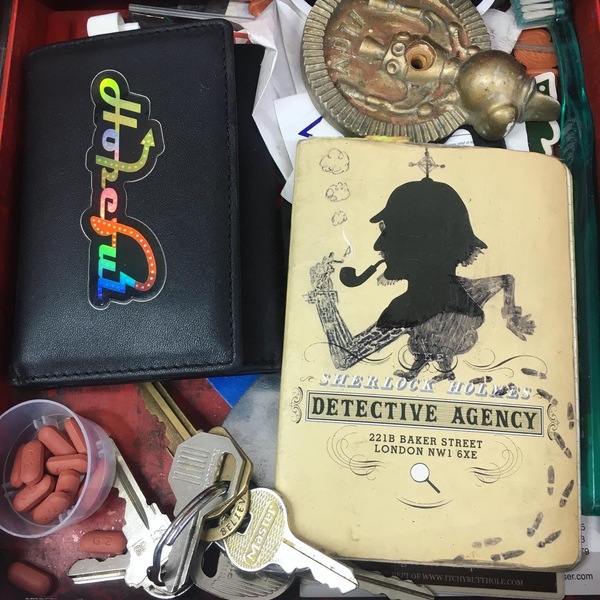
Wallet is from our son, he supplies my wallets as I wear them out and they in turn are my daily tactile conduit to his person. The “Hopeful” decal is by my friend and esteemed artist Charlie Hewitt of Maine, and reminds me daily to attempt to be so. The Detective Agency notebook is a gift from my previous employer, Tim Ward of Ward & Ward Fine Art Framing in Kansas City, Mo. Tim is perhaps the most funny, erudite and kind person I‘ve ever worked for in my life, and it’s only because of the Covid 19 World Tour that I had to depart his shop. The ibuprofen are because, you know, I was born last century and so were my hands.
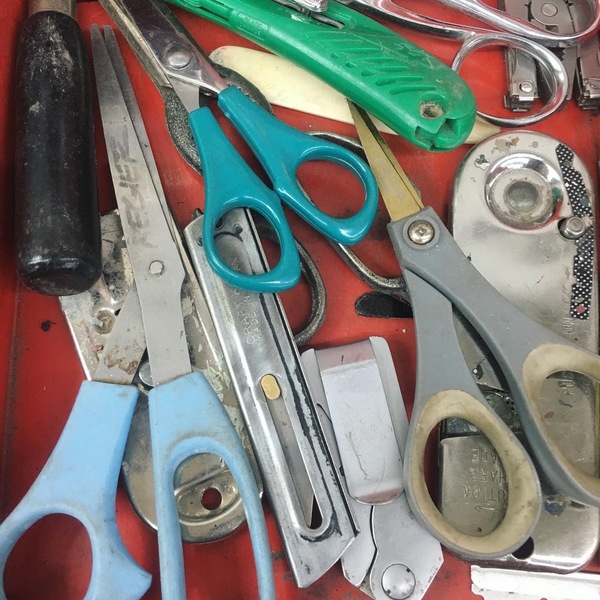
I do a lot of pattern making in my attempts to recreate forms in order to resuscitate the body skins of these old automobiles. Sometimes, I gotta cut something. These do it, the thing.
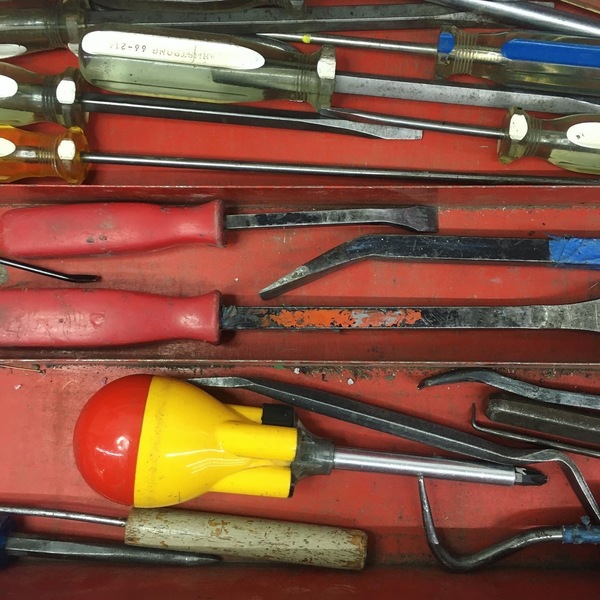
I use screwdrivers, awls, punches and pry bars a lot. A LOT. So much of what I do has to do with panel alignment, that means bringing holes and parts into mutual space. I use vintage tools whenever practical because fundamentally most of them (there are indeed exceptions) have not been improved upon and also because their patina and endurance remind me daily, that ALL time is deep time. The vintage bulbous red and yellow screwdriver is called a “Screwball” and it actually is my all-time favorite screwdriver. There are four currently on eBay. It’s a great tool, especially for those of us with any time of arthritis or hand issues.
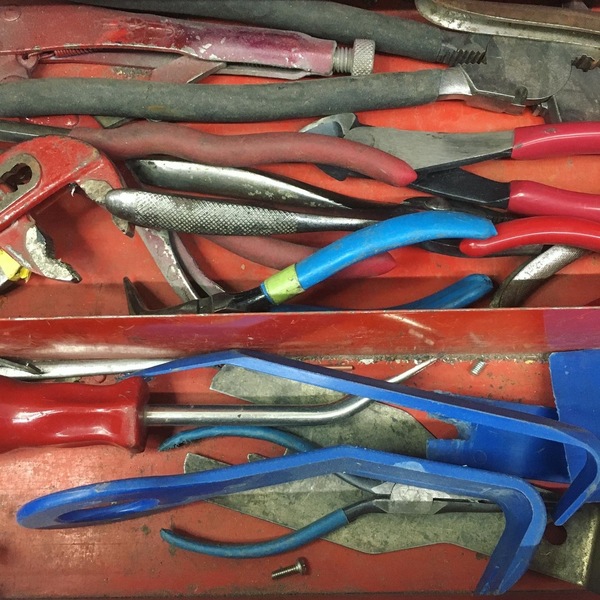
Pliers, cutters, pry bars. In one’s hand these accomplish the things our hands wish they could do. (Trim And Molding Tool Set, $6/5pc)
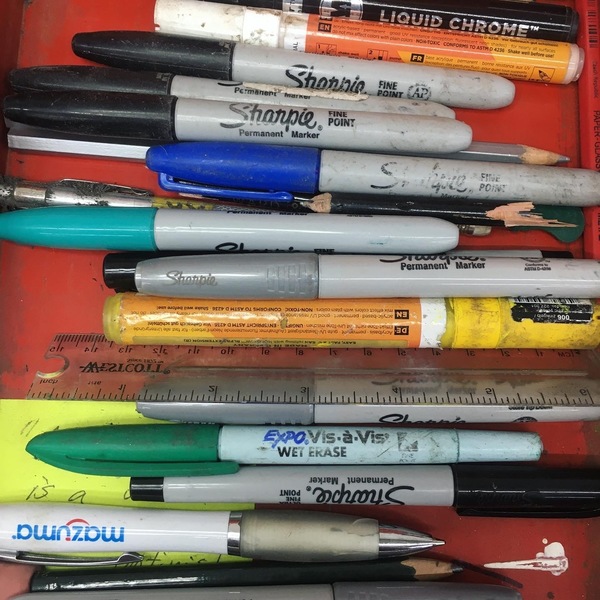
I may not “draw” so much in my current trade (for its own sake), but I scribe, notate, sketch and list constantly. In that regard, my pen drawer is hardly discernible from my cartoonists’ desk, though I suppose more pedestrian of intent.
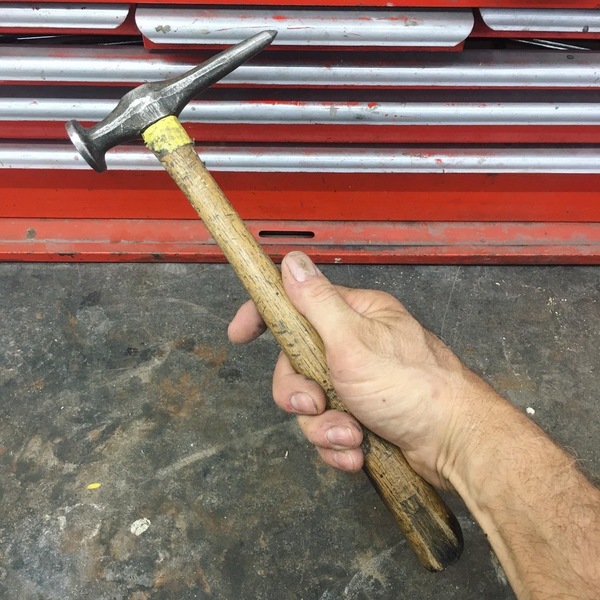
My dad worked in a body shop in Omaha, Nebraska in the ‘50s. He bought this hammer new, then. He taught me this trade and had me paint my first car at age 13 (circa 1977). I learned the trade well enough to desire to leave it, for good; for health concerns both mental and physical at age 34 and for the sweet siren call of the Art World. Twenty years later, mostly due to the realities of Covid 19 and such, I returned to the trade to survive. There’s a saying, “the hammer forms the hand.” My dad taught me to survive, and survival ain’t sexy, but neither is it the worst option. My dad has moved on, but his hammer is an (though only one) extension of his life and his passions. This tool is the only thing I would own if I could own only one thing.
11/10/21








